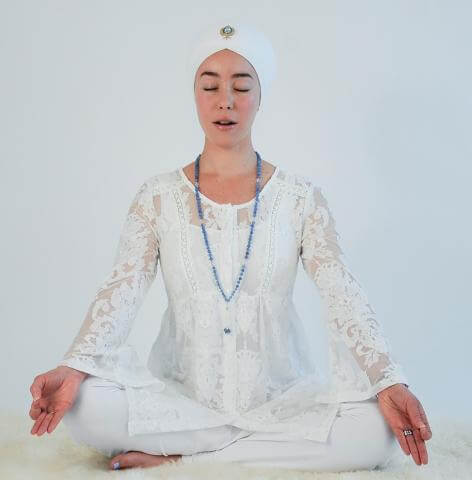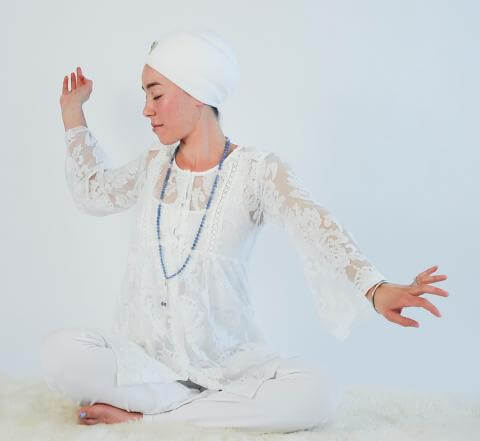This meditation is said to redeem all negativity of the past and present, smooth out your day-to-day problems, and create a positive tomorrow. It can change your luck and allow prosperity to flow. It allows you to let go of attachments to the mind and to the impact of past actions, so you can create and live a fulfilled life.
The Practice
Posture: Sit in Easy Pose, with a light neck lock.
Eyes: The eyes are 1/10th open. Concentrate at the Third Eye Point.
Mudra: Place the wrists over the knees, hands in Gyan Mudra, with the arms and elbows straight.
Mantra: Saa-Taa-Naa-Maa-Raa-Maa-Daa-Saa-Saa-Say-So-Hung
Chant the mantra “Sa Ta Na Ma, Ra Ma Da Sa, Sa Se So Hung” on a single breath, as you press the fingertips sequentially with each syllable.
Use a monotone voice in a Tibetan-like form or use the same melody you would use for Kirtan Kriya.

Continue for 11 – 62 minutes.
To End
Inhale deeply and hold the breath. Move the body in a slow twist and stretch motion. Move each muscle of the body. Move the head, torso, arms, back, belly and hands. Then exhale powerfully.
Repeat this 3 – 5 times.
Immediately sit straight. Look at the Lotus Point, the tip of the nose. Become totally calm, absolutely still, and meditate.

Continue to meditate for 2 – 3 minutes.
Comments:
This beautiful and powerful meditation has a history in its name. The Hindu God of Knowledge and Happiness is Ganesha. The other name for Ganesha is Gunpati. Ganesha was depicted as a rotund man with the head of an elephant. This huge body balances and rides on a rat, conveying the message that even the impossible can be done with this meditation.
The rat represents the quality of penetration. A rat can get in almost any place. So Ganesha can know anything and can get past any blockages. Wisdom and wise choices grant you happiness in your life. The impact of this meditation is to clear the blocks from your own karma.
Each of us has three regions of life to conquer: the past, which is recorded in our samskaras and which brings us the challenges and blessings of fate; the present, which must be mastered by karma yoga—the practice of action with integrity in the moment; and the future, recorded in the ether and at its best and most fulfilled, is called dharma.